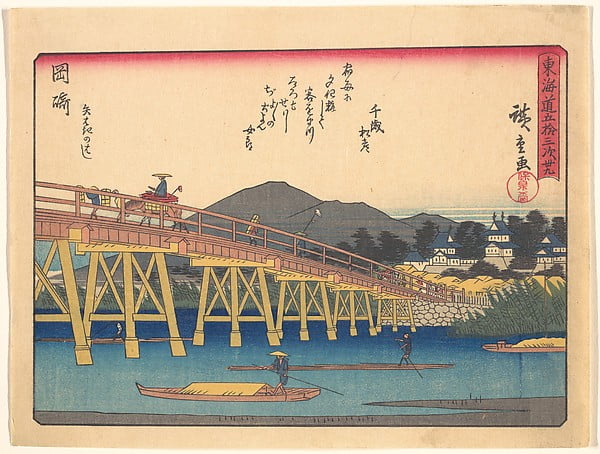This week students will practice the concept of one-point perspective drawing. This is hard to fit into our unit on ancient art because early civilizations tended to create flattened images with little to no depth. In fact, the use of perspective in painting wasn’t seen until the 15th century in Italy. But, of course, ideas travel…
The first use of mathematical perspective in Japanese art can easily be seen in woodblock prints by Hokusai and Hiroshige in the 1800s. They use very strong, clean lines that create dynamic depth and perspective. You can use the following images to show your students an early Japanese painting with some depth but no one-point perspective, and the later prints that do have one-point perspective. (I often put images in a Powerpoint presentation and use my laptop to present images in class rather than printing them all out)
- Landscape with Pavilion, shows a foreground , middleground, and background, but still feels flat
- Cotton Goods Lane and Cherry Blossoms on the Tama River by Hiroshige
- Nihonbashi in Edo by Hokusai
- Red Pagoda in Snow and Spring in Daigoji Temple are examples of Japanese artworks with pagodas, similar to what students will be drawing
Materials:
Drawing paper
Ruler
Pencils
White board and marker
Colored pencils
Images of Japanese art showing perspective
Here is the Cycle 1 Week 5- Japanese Pagoda Ages 4-6 lesson plan
Here is the Cycle 1 Week 5- Japanese Pagoda Ages 7-9 lesson plan
And the Cycle 1 Week 5- Japanese Pagoda Ages 10-11 lesson plan

Leave a Reply